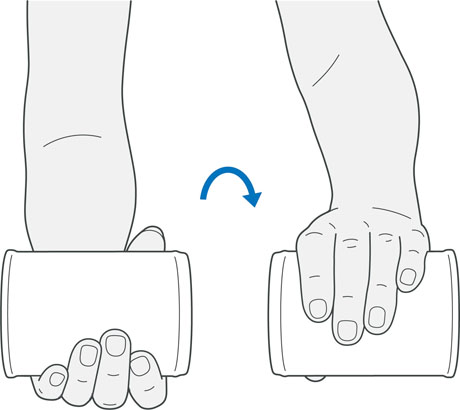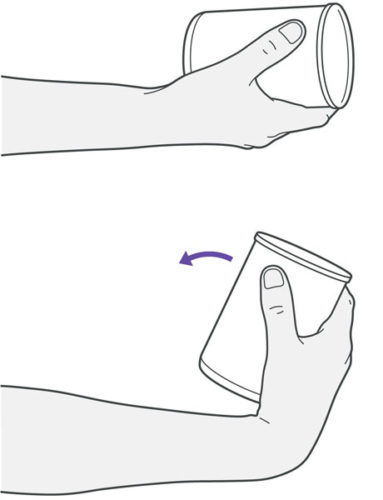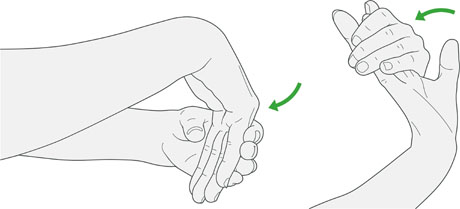Despite its name, tennis elbow isn’t only prevalent in those who play tennis – it’s a common overuse injury that can affect anyone who does repetitive movements.
Also known by its medical name lateral epicondylitis, tennis elbow is commonly found in the forearm where it meets the elbow joint on the outside of the arm (don’t get it confused with Golfer’s Elbow which affects the inside of the arm).
Tennis Elbow is caused by the extended use of wrist extensors, meaning anyone who uses their arms for their job can be affected including painters, carpenters, plumbers or even computer programmers! In fact, most new cases of tennis elbow are due to heavy computer use.
Tennis Elbow pain that lasts for more than 6 weeks is considered to be sub-acute, whereas pain that lasts for more than three months is considered chronic. For most people, tennis elbow pain is something that they just grit their teeth and bear.
However, tennis elbow can lead to even more complicated issues in the future if it isn’t properly treated early on. Not only this, but prevention is also extremely important if you work in a job that requires you to constantly use your hands.
If you are not addressing your tennis elbow issues when they first emerge, you might have to go for an orthopaedic surgery later on. Make sure that you take the proper steps and get in touch with the best doctors to help you overcome pains and worries around tennis elbow.
Below are some physiotherapy tips for those suffering from tennis elbow:
Stop and Recover
The easiest tip which can help you manage tennis elbow pain is to stop whatever you’re doing that is causing the pain. Use an ice pack and hold it to the affected area for several minutes in order to ease the pain. Tendons calm down slowly so the pain may not go away immediately.
Another way is to cut back on movements which are causing or making the pain worse, however, this may not be possible if your injury is caused by work. Modifying the way you perform tasks and focus on other muscle groups. Statistically speaking, the longer you experience the ongoing pain, the longer your recovery process will be and the higher your chances will be of recurrence.
Those who visit musculoskeletal physiotherapists will have the best chances of recovery and prevention.
Get a Coach or Physio to Check Your Form
If your pain is caused by you playing tennis then it’s important to get your form checked out by your coach or a physio. Incorrect technique can cause you to rotate from your wrists rather than your elbow joint or shoulder, increasing the amount of pressure in the tendon and causing pain. Those with an overgrip can also lead to premature cases of tennis elbow pain. The good thing is that physiotherapists are everywhere and you won’t have to look far for a physiotherapist in Sydney or any other city.
Make Ergonomic Adjustments to Your Workspace
If your pain is caused heavy computer use then making simple adjustments to your workspace can ease and prevent tennis elbow pain. Keyboards are a big contributor to this problem as most people prefer to slant their keyboards downwards, however, this locks your wrist into an extension which creates added pressure for your wrists. Using a gel pad can be a good defender for this as well as using a comfortable chair.
Stretching and Strengthening Exercises
Musculoskeletal physiotherapists will recommend a number of exercises which you can easily do at home in order to treat and prevent tennis elbow pain. Below are some great examples which can be done in no time:
-
Towel Twist

- Hold a towel lengthwise and relax your shoulders
- Twist the towel in opposite directions as if you’re wringing it out
- Repeat the movement 10 times in one direction
- Switch to the other direction for another 10 times
-
Wrist Turn
- Bend the elbow at a right angle with the hand’s palm up and flat
- Turn your hand slowly until the palm is facing down
- Hold this position for 5 seconds and repeat 10 times for each hand
3. Wrist Flex
- Extend your arm directly out with your palm down and hand flat
- Using your other hand, gently lift your flat hand upwards to a right angle position
- Hold this position for 15 – 30 seconds and slowly let go
- Repeat this 3 times for each hand












Comments are closed.